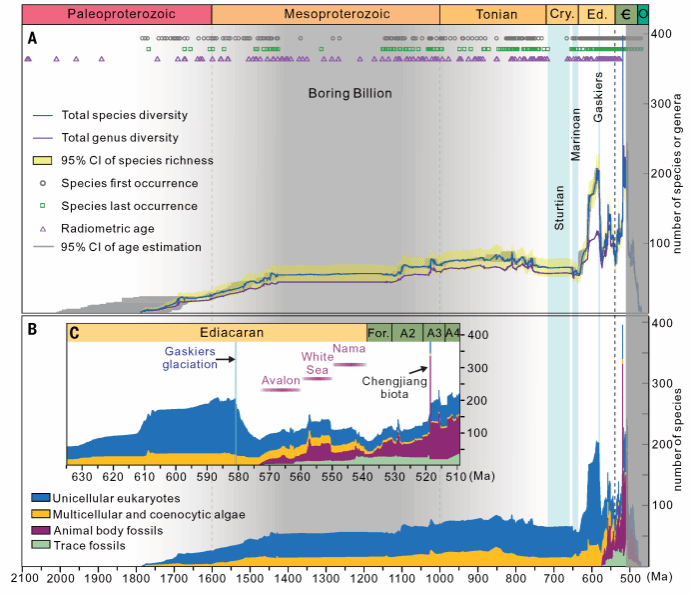December 20, 2024 — In a groundbreaking study published in Science, an international paleontological research team led by Dr. Qing Tang and Professor Shuzhong Shen from the School of Earth Sciences and Engineering at Nanjing University has made significant advances in understanding early life evolution. By establishing the biggest paleobiology database of early Earth to date and employing cutting-edge analytical tools, including supercomputer and artificial intelligence, the research team, for the first time, constructed a high-resolution biodiversity curve spanning from 2 to 0.5 billion years ago. This study reveals that early life on Earth underwent a prolonged evolutionary journey, marked by multiple major radiations and mass extinctions before the formation of complex ecosystems around 0.5 billion years ago. This study fills a critical gap in our understanding of the macroevolution of life on early Earth, providing a theoretical basis for elucidating the origins and early evolution of life, exploring the potential for extraterrestrial life, and assessing the sustainable development of a habitable Earth.
Link to the paper: https://doi.org/10.1126/science.adm9137
Title: Quantifying the global biodiversity of Proterozoic eukaryotes
Abstract
The global diversity of Proterozoic eukaryote fossils is poorly quantified despite its fundamental importance to the understanding of macroevolutionary patterns and dynamics on the early Earth. Here we report a new construction of fossil eukaryote diversity from the Paleoproterozoic to early Cambrian based on a comprehensive data compilation and quantitative analyses. The resulting taxonomic richness curve verifies Cryogenian glaciations as a major divide that separates the “Boring Billion” and Ediacaran Period, with the former characterized by a remarkable stasis and the latter by greater diversity, more rapid turnover, and multiple radiations and extinctions. These contrasting evolutionary patterns and dynamics provide a framework to test competing hypotheses on biosphere and geosphere co-evolution in the Proterozoic Eon.

Biodiversity trajectory of eukaryotic fossils from the Paleoproterozoic to early Cambrian.
